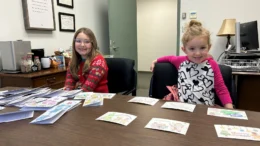Over the years I have had a lot of people who love to take pictures come up to me wanting to show me their photos and or pick my brain about photography. I love this sort of interaction and the chance to help someone perhaps make better photos or learn from them something I didn’t know.
Often folks ask about gear…what lenses are good for what, is Canon better than Nikon, etc. I usually refer them to someone else on questions like that because I’m not a gear guy. I try best to understand the equipment that I have so I can make the best out of that equipment for the assignment I have. Sometimes that’s my cellphone, sometimes that’s my middle of the road Nikon d90 amateur grade (higher end) and sometimes its the $5,000 canon that I call the freakin’ Maserati of cameras that I am very fortunate to be able to use.
A really good photographer can find a way to make a picture no matter what they have. They understand their equipment’s abilities and then look at the story they want to tell and then formulate a plan based on all the factors. It may not always be the picture they want to make if everything was ideal, but they find a way to make a picture that communicates their intent – communicates the story.
When I am asked about how to do certain things, sometimes its hard to explain. I learned photography from the basics of basics with black and white film. If you wanted to do photography back then, you needed to learn the basics of exposure, which also included understanding how to develop it after you made the initial exposure. Most cameras were still manual cameras so we learned how to read light meters and set our cameras to get what we wanted. It wasn’t particularly complicated, but if you wanted to make photos, you had no choice but to learn.
Today is different, a smart phone or an automatic digital camera allows you to make photos and get pretty decent results without knowing anything. So teaching someone the basics is harder because they’re thinking “all I needed to do was push this button and I got great pictures yesterday. How come they’re not coming out today?”
This picture above is an example of understanding light and how to make a picture. The camera might have been able to make this picture on automatic if it just managed to find settings that allowed it to. But I was able to make this picture (breaking a lot of rules for what one should do while making pictures) simply because I knew how the light and the camera works. This comes from study and experience, not to mention a lot of failures along the way.
I’m not saying there is anything special about the photo, but i knew what I wanted to achieve and, in a very short amount of time, was able to set my camera to achieve it.
This is another example of knowing the light and understanding what I wanted to achieve. If I were to expose for the boy throwing the ball I would’ve washed out the clouds, but part of the story I wanted to tell was the threatening rain we had all day on Friday in Oil City. As I worked this idea I tried several different things, including shooting pictures from the other side where I could balance the light and shadows to get some sky and still see the boy playing catch. Adjusting my camera to compensate for what the light would give me.
It’s this sort of thing that separates the photographers with experience and the ones without. And believe me, its a constant learning curve. I am amazed by some photographers who just grab unbelievable images everyday, it seems, and I feel like I need to go back to the drawing board and learn and learn and learn.
This was the same boy from a different angle, where what sun was shining was facing towards him. I knew i needed to expose for the sky and lighten him and grass on the computer. If I had exposed for him perfectly, the sky would’ve been washed out and we would’ve lost all cloud definition.
The reason I discuss this in a blog is because in this day and age, photographs are even more important than ever and I’m hoping more people learn to use there equipment so we get better and better photographs. Pointing your cell phone and hoping it comes out isn’t nearly as much fun as knowing how to use a camera app on your cell phone and knowing it will come out.
(Richard Sayer – The Derrick and The News-Herald photographer)



































